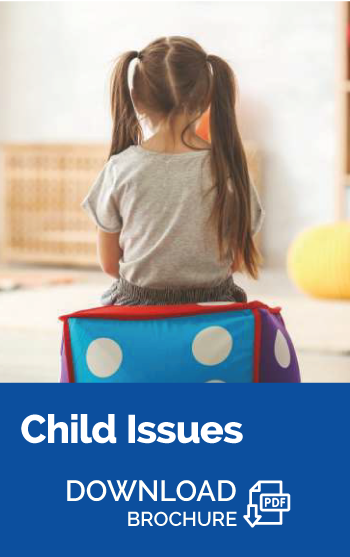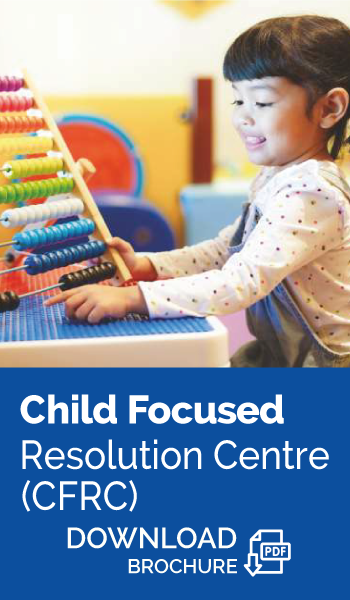
After the court grants custody orders and child access to the respective parents, it is imperative that all rules and restrictions are abided by.
The court may also have specified in the orders on matters pertaining to travel and relocation. Unless otherwise ordered by the court, the rules are as follows:
- The non-custodial parent is not allowed to travel outside of Singapore unless the custodial parent grants him/her permission.
- The custodial parent may not require the permission of the other party if he/she wishes to bring the child out of Singapore if the travel period is less than a month. It is advisable, however, that the other party is still kept in the loop of the travel plans.
- If the custodial parent wishes to relocate, for instance to the home country of the foreign spouse who has custody, he/she must seek consent from the non-custodial parent in writing.
In the event where the above rules are not met, the party in question can be accused of wrongfully relocating the child.
Wrongful relocation
Generally, wrongful relocation refers to one party moving and retaining the child from his/her country of habitual residence without the consent of the other party. This can be considered child abduction.
In such cases, the parent who wishes to file a complaint to court on the wrongful relocation of the child can do so by sending an application to the court to invoke the Hague Convention and the Civil Aspects of International Child Abduction, within one year of the child’s wrongful removal.
Before proceeding, however, the party must ensure that he/she has an order for custody, care and control of the child. Otherwise, he/she can apply for an interim order.
There are several requirements to be fulfilled before the Hague Convention can be enforced, as further discussed below.
The Hague Convention
As an international treaty, the Hague Convention is meant to protect children who have been unlawfully removed from or retained outside of their home country without the permission of the parent who has custodial rights.
It helps to protect such children from harm caused as a result of international abduction. It provides parents, on legal grounds, a platform to prompt the return of the child or arrange for rights to have access to the child.
It is imperative to note that the Hague Convention does not resolve any issues pertaining to custody and access – it only determines which court will make decisions on the custody orders.
The Hague Convention, however, cannot come into effect in all cases of wrongful relocation. The terms of the treaty can only be invoked in countries that are signatories to the Convention.
Therefore, parents can only seek remedies under the Hague Convention if the child was wrongfully relocated from one signatory country to another.
In the case of Singapore, a signatory nation, the parent can file for an application under the International Child Abduction Act to declare that the removal of the child outside of Singapore was wrongful.
After which, he/she can use this declaration to apply for the return of the child under the Hague Convention in the signatory country the child was taken to or the country which the child was living in (i.e. Singapore). The laws of the respective country will apply.
Read More: Hague Convention FAQ`s
Habitual residence of the child
According to the Hague Convention, the complaining parent must prove that the child is a habitual resident of the country he/she was removed from.
As the treaty does not define this term explicitly, this issue is the most contested. Nonetheless, the court broadly reads the term within the context of the treaty’s purpose of protecting the child from harm as a result of the removal.
Beyond the child’s citizenship status, the court explores several factors before determining the child’s habitual residence.
They include the shared intentions of both parents, the history of the child’s location (i.e. school, home, primary caregiver) and the settled nature of the family before the removal that gave rise to the request for the return of the child.
After proving the habitual residence of the child in the country where the Hague Convention is invoked, both parents are required to file for custody orders in that country.
Defences
Should you have a case filed against you for wrongfully removing your child under the Hague Convention, there are several defences you can rely on:
- More than a year has passed after the removal
- The complaining parent has consented to the removal
- The child’s return will pose him/her severe risk of physical or psychological harm or that the return will be deemed intolerable for the child
- The child is old and matured enough to object to being returned
- The child’s return violates human rights and fundamental freedoms
The legal proceedings pertaining to international child abduction can be complex. It is thus advised to seek guidance from our lawyers on this matter.
What to do if you cannot invoke the Hague Convention
If either of the countries is not a signatory of the Hague Convention, the countries will need to apply their own laws.
For instance, if a child has been wrongfully removed from a non-signatory foreign jurisdiction and retained in Singapore, the court in Singapore will apply the welfare principle and order the immediate return of the child to his/her country of habitual residence to minimise any impact to the child’s wellbeing.
Read more: Child Access: Arrangements Between Divorced Parents


We’re here for you
We have a dedicated family law team ready to listen, understand your situation, and advise you on:
- Child Custody & Maintenance issues;
- Access Arrangements;
- Parenting Plans;
- Relocation issues.









